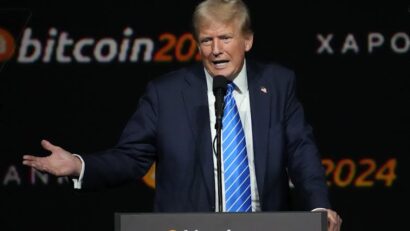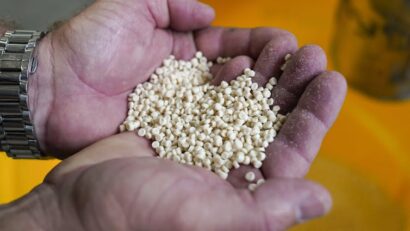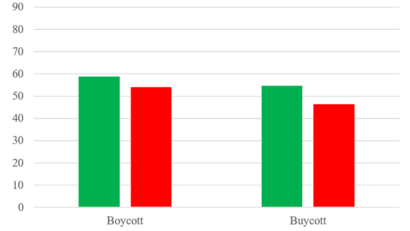
Cryptocurrency’s transparency is a mirage: New research shows a small group of insiders influence its value
United States President Donald Trump recently announced the U.S. would establish a strategic cryptocurrency reserve of Bitcoin, Ether, Ripple, Solana and Cardano. This move, he said, would make the U.S. “the crypto capital of the world.”
Once a vocal crypto-skeptic, Trump now frames his support as an embrace of technologies that champion freedom and innovation.
However, the problem with Trump’s view is that it assumes crypto will lead to the elimination of financial intermediaries. By replacing trust with transparency, cryptocurrency promises to put individuals in charge of their monetary transactions.
Our research demonstrates that this is only a partial view. In reality, crypto is dependent on social practices behind the technology.
Crypto-believers often blame greedy financiers as the cause of the Great Recession in 2008. But we argue that crypto is not immune to these same risks.
Replacing trust with transparency
Cryptocurrencies are a type of digital money that trades on a blockchain. A blockchain is a decentralized ledger technology that allows users to trade pseudo-anonymously.
Public blockchains operate on a distributed peer-to-peer network. This network provides each user a complete record of transactions that is updated in real time. Users can send digital cash between themselves without relying on a centralized authority.
Donald Trump speaks at the annual Bitcoin Conference in July 2024, in Nashville, Tenn.
(AP Photo/Mark Humphrey)
Since each user has a full record of transactions, the system promises full transparency. But our research demonstrates that public blockchains, and the cryptocurrencies that run on them, do not actually replace trust with transparency.
Speculation, manipulation and market crashes remain very real dangers, regardless of whether the financial system is centralized or decentralized.
Cryptocurrencies rely on people
We studied the communications between the founder of Bitcoin, Satoshi Nakamoto, and the early Bitcoin community. We found the development and implementation of cryptocurrencies relies on negotiations between individuals. Who has a final say on which line of code will prevail depends on a social hierarchy dominated by insiders.
Centralization of power in the hands of insiders is still a major issue in the cryptocurrency space. This is particularly an issue for emerging cryptocurrencies like memecoins. Memecoins are a type of cryptocurrency named after internet memes or similar jokes. They draw their value entirely from speculation.
The Trump Organization recently launched memecoins $TRUMP and $MELANIA. The U.S. Securities and Exchange Commission has concluded that memecoins do not qualify as securities, and therefore are outside its regulatory purview. Not only are memecoins risky, but they come with a significant risk of insider trading.
Read more:
$Trump and $Melania crypto tokens illustrate the risks posed by trendy meme coins
A recent case study on the memecoin $LIBRA shows how influencers, anonymous developers and centralized exchanges facilitate market distortions, often at the expense of retail investors.
When cryptocurrencies are outside the scope of regulation, individuals behind the technology can profit from insider information. This is less of a risk with widely traded cryptocurrencies like Ether and Bitcoin, but investors should be aware that any technology is reliant on the people who design the code and regulate its changes.
Personal views towards privacy, for instance, can impact governance decisions. These beliefs can have important implications for the value and usability of any technology, cryptocurrencies included.
Talking crypto into reality
Our research suggests cryptocurrency insiders can artificially inflate the value of their coins by talking them up, effectively creating value out of nothing.
By using economic and accounting language to describe Bitcoin, the early Bitcoin community effectively turned a string of zeroes and ones into something that could be measured, valued and recognized. Economists argue that even fiat currency is backed by a type of belief — trust in institutions.
A price chart on the Bybit website for the cryptocurrency Ethereum is seen on a computer screen in New York in February 2025.
(AP Photo/Patrick Sison)
Bitcoin, too, relies on belief, but a different kind. Its value is based users’ collective confidence in the technology and security of the network, a phenomenon known as the network effect. As more people adopt Bitcoin, its perceived value rises, creating a self-sustaining cycle of belief and value based on market demand.
Recently, American stockbroker and anti-crypto advocate Peter Schiff accused Trump of manipulating the cryptocurrency market following the announcement of the strategic crypto reserve. Schiff has called for a congressional investigation into Trump and his team to determine who may have profited from the announcement, which triggered a massive increase in crypto prices.
Given the volatility of cryptocurrencies, their values are highly susceptible to herd behaviour, and public sentiment has a significant effect on cryptocurrency returns.
Where does this leave investors?
Our research and other studies like it have shown that cryptocurrency is subject to important value changes based on announcements by a small group of influential individuals.
We caution anyone interested in investing in crypto to do their homework by examining the underlying economics of a coin, getting to know the team behind it and evaluating their risk tolerance before moving forward.
With thousands of cryptocurrencies in circulation, distinguishing between a promising investment, a speculative gamble or even scams is crucial.
Despite the uncertain and unpredictable nature of digital assets, one thing is certain: the conversation around crypto is far from over. Läs mer…








